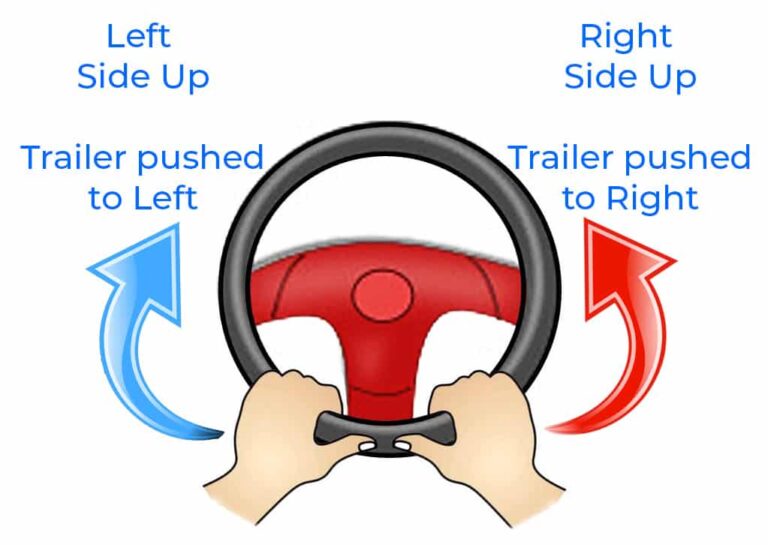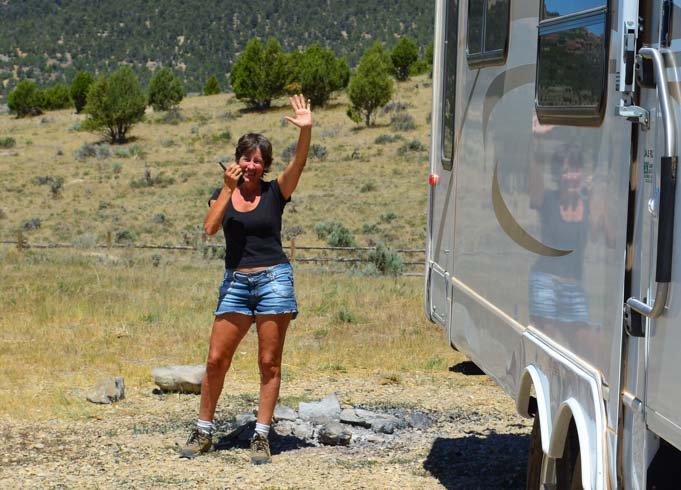
Tips for Backing Up a Trailer
Is backing up a trailer as a newbie super intimidating? Well that seems obvious. Even if you’re an old pro, maybe some of these tips can help you out!
Thankfully, backing up a trailer isn’t on a standard driving test, because then I don’t know if anyone would pass the first time. Remember having to parallel park while under extreme judgment? Nah.
1. Don’t Panic
You see it with new drivers every day, a split decision made in an unfamiliar situation ends with a scrape or dent. It’s the same even with the most experienced of drivers when backing up a trailer for the first time. So don’t worry about getting it perfect on attempt one, readjust and find a new angle. If anyone is watching, try not to think about them – they’re probably remembering all of their own parking horror stories!
So stop and take a few breaths and then calmly make a plan, discuss with your guiding partner, and execute. Don’t worry about making several attempts and if you really feel yourself getting frustrated: pull away and drive a loop before coming back and start again.
Trying to make a plan on the fly will only stress you out (and possibly result in damage). Remember, every RVer has been where you are – and if you’re somewhere not RV centered, let people get a little snippy. Better a few annoyed glares than damage to your rig or other property (or people).
2. Know Your Basics
Learn how your trailer will move as you turn the steering wheel:
- With your hand on the bottom of your steering wheel, the direction your hand moves is the same direction your trailer moves. So, if you have your hand at the 6 o’clock position, and move your hand to the right towards 3 o’clock, (turning the wheel counter-clockwise) the butt end of your trailer will go to the right.
Remember, we are talking about directions in reference to the forward facing of your vehicle, so right = passenger side, left = driver side. Cool?
As you back-up in a turn, your tow vehicle and trailer will form a V-shape pointing away from the direction you’re turning the steering wheel. The V will get sharper if you hold your wheel steady. The harsher the turn, the faster it will sharpen – too sharp and you risk jack-knifing/locking up. Faster is not better.
To straighten out, go forward as it’s almost impossible to straighten out going backwards. Simply pull forward until you have fully straightened out again and readjust your plan. Any time you’re stuck, straightening out and starting from the beginning is always your best bet.
This isn’t trying to parallel park for your license – you have as many chances as you need. Everyone else can wait.

3. Practice, Practice, Practice
Hook-up and get yourself to a big empty parking lot – schools and arenas on weekends are great options. Bring along some rubber pylons if you can, or other bright colored obstacles that won’t damage your trailer or truck to set-up a mock campsite so you can get a feel for how your trailer and tow vehicle work together. It can also be a great way to practice with your partner.
4. Have a Partner
Having someone to help guide you can be even better than a back-up camera. Get a good set of walkie-talkies (they’re a lot easier to use than yelling to and fro) and use clear language. Remember that your partner is focusing on the movement of the trailer, it’s your job to direct the tow vehicle to follow their instructions.
Avoid “left” and “right” directions, and try “passenger” and “driver” side for clear communication – or figure out what the best language is to use with your guide. Going through mock parking with them will ensure easy and effective communication as long as you both know exactly what the other is saying. And, if you don’t have radios, figure out gestures and signs to communicate fully. Many RVers call this the Marriage Saver and truer words have never been spoken.
If you don’t have someone with you, you can always ask a site attendant or even one of your neighbors to help you out. The nice thing about RVers? We tend to be open to lending a helping hand.
No Bull Tip! If you can’t see your guide in your side mirror STOP! Accidents happen when you don’t have a visual and could end in serious injury. Remember to keep any pets and kids completely clear.

5. Back-up Cameras
A true hack at its finest – it can’t be replaced by human communication but it comes dang close. More trailers and RVs are coming standard with back-up cameras already installed, or at the very least are prepped for them. However, even if prep is there, installation is not always an easy process. You’re better off to get a camera through a dealer who will install it for you than going through the effort of doing it yourself. But, the pay off will be worth it, especially if you don’t travel with someone who can help guide you all the time.
To Summarize:
- Clear Your Site: Upon arriving at your campsite, get out of your vehicle and take a walk around your site, clearing any debris or obstacles that you can (like picnic tables) to give yourself a clear parking spot. Remember when planning to accommodate for any slides and your awning.
- Get Straight: Back up and begin to align the butt of your trailer to your campsite, once you’ve gotten your angle, pull forward and straighten out your tow vehicle so you are able to go straight back. You might have to do this a few times so be patient. The straighter you are going back into your space, the easier it will be.
- Go Slow: Some campsites are going to be easier to maneuver than others, so be patient with yourself. The biggest disasters happen when you go too fast.
- Gentle Turns: Avoid making huge, dramatic turns with your wheel. Optimal backing-up will go slow, overcorrecting your turns will more likely end in a lock-up.
Do you have any trailer parking horror stories?